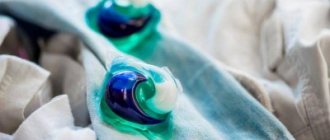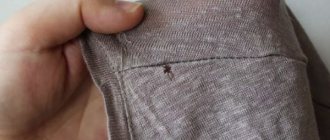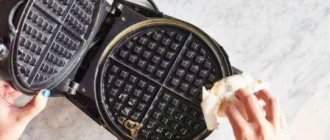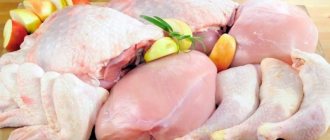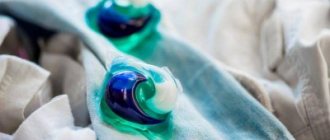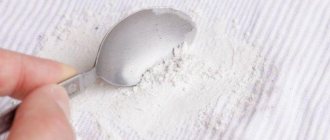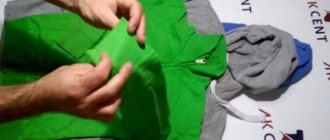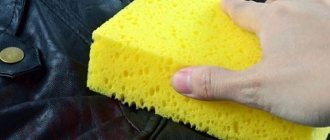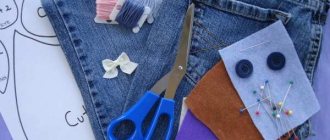There are many different types of rugs on the market and they are similar to each other. Experienced yogis, through trial and error, have chosen the one that best suits them. But what if you are just starting your adventure and don’t know how to choose the right yoga mat, which one will be best.
A bad product, like uncomfortable clothing, can effectively hinder practice, causing discomfort and irritation.
They differ from each other in four parameters:
- thickness is a decisive factor;
- material (differs in slip resistance, durability, and cleaning method);
- length;
- price.
Easy care of the rug is one of the selection criteria
Thickness
The dimensions of the mat ensure comfort in performing asanas. The thicker the mat, the greater the comfort provided to the body and joints (especially for people who have problems with knee diseases). Thicker mat:
- better protection from cold floors;
- has excellent damping, which must be taken into account in classes with vigorous exercises (Ashtanga yoga).
The super-thin mats are easy to transport and very lightweight, making it easy to perform exercises. They may have good slip resistance (depending on the material they are made from) but a low drag coefficient.
Products available on the market have the following thicknesses:
- 2.5-3 mm (thin);
- 4.5 mm (medium);
- 5-6 mm (thick).
If you value mobility but don't have a car, a thick rug will create additional problems.
What's the alternative?
Thin mats start from 1.5 mm. Stores also offer a super-light Manduka ECO Super Light mat for Manduka yoga, which weighs one kilogram. Big advantage:
- mobility;
- ease.
Synthetic material or natural?
If you are a beginner and choose a yoga mat for training at home or in yoga halls, polymer mats will be the best option for practicing yoga for beginners. Inexpensive and simple, just right for training on an individual mat.
For professional training, the best solution would be a mat made of natural rubber. A mat made of natural rubber is absolutely non-toxic and has the highest stickiness when in contact with the skin and the floor. It is convenient to wash. The only disadvantage of natural material is its weight. Rubber mats are quite heavy, weighing from 2-3 kg.
Description
Depending on the material used, thin or super thin yoga mats are durable and resistant to damage.
If you decide to buy a thick and comfortable mat, the “thickness” parameter should vary within 6 mm. This is a great choice for yogis who want to practice at home.
Medium models
The legendary black PRO Manduk mat has a 6 mm thickness and a lifetime guarantee.
The disadvantage of thick mats is the high price and the fact that they are heavy. If you will be shuttling between home and a yoga studio, the best solution would be a medium mat with a thickness of 4-5 mm. A good example of an affordable mat is the EKO Manduk (5 mm) or the Yin and Yang Studio mat (4.5 mm with the lowest price level). In the differences in the qualities of the rugs, it is difficult to find a sharp transition; both rugs are a good compromise between comfort, durability, weight, and price.
A thick mat is an ideal choice for people who train at home and love comfort.
A medium mat thickness is also a good choice for those who will use it at home or in the studio. Most of them are available in lengths up to 200 mm.
Murugan
Made from natural material, the Murugan rubber yoga mat has phenomenal anti-slip properties. Cotton fiber is used to reinforce the Murugan. It is thick enough to absorb moisture during intense sweating. For yoga, the rubber used to make mats comes from the Brazilian Hevea latex tree. The product does not deform or lose its shape depending on operating conditions.
Reebok
Thin mats include (RSYG-11024). Its anti-slip structure helps keep your arms and legs in place while performing various asanas and also prevents the mat from slipping. The Reebok can be stored on a special riser because it has special eyes that allow it to be hung.
Proper care is the key to long service life
To start using such a product, just unwrap it and you can begin your spiritual development. After training, you need to take your time and fold the mat correctly. In addition, do not forget that such an irreplaceable assistant can become dirty over time. If you take good care of it, it will last for several more years.
In order to extend its service life, you must adhere to several basic rules:
- Please take into account the fact that the purchased mat cannot be used immediately, as manufacturers coat it with special compounds so that they do not stick to each other during transportation. Therefore, first wash the mat with a soapy solution, where the main component is laundry soap.
- When cleaning the mat, do not use laundry detergent or regular toilet soap.
- This product needs to be washed once every 2-3 months.
- Washing rugs in a washing machine is strictly prohibited, as frequent washing may render the rug unusable.
- Do not do exercises with shoes on. It is better to do this in socks or bare feet.
- Don't stack your yoga mats multiple times. Large folds or creases may form at the fracture.
Important! Unfortunately, this type of product takes a very long time to dry - up to two days. After waiting a little, you can safely use it in your work.
Making a rug with your own hands
Those who practice yoga constantly and want to soften a hard surface can make a mat with their own hands. This will be an unusual and exclusive thing and will provide a stable basis for performing asanas. It will become a kind of anchor and the first element that will be in contact with you before entering the yogic path. You will choose a material for it: rubber, bamboo or plastic, whichever you think will be comfortable for you: color and other parameters, and it will be easier to practice on it, since you will like it.
Color, although this is not the most important thing, you can choose the one that will help you achieve your long-term goal and will set you up for the spiritual practice of yoga.
If you need calmness, choose blue; if you need energy, choose orange or red.
If you have some sewing experience, making a mat will not be difficult.
- Measure the width of your shoulders and add 20-25 cm to it - this will be the width of your rug.
- Make the length of the rug 20-25 cm longer than your height.
- Before cutting the fabric, use tailor's chalk to draw a rectangle with the required dimensions.
- Seal the edges of the homemade product so that they have a neat appearance.
So, if a person is 170 cm tall and has a shoulder width of 50 cm, then the mat should be made measuring 75x195 cm. After washing, some fabrics shrink, so you can make a margin of 1-2 cm on each side.
Protect your mat and transport it safely with a sturdy case that has room for a sweatshirt, water bottle, and other personal items.
A good idea for any busy woman, this bag complements a casual look and can be drawn, cut and sewn in just a few hours.
Making a cover from an old umbrella
Take old umbrellas and carefully separate the material from the wires. The fabric can be another tightly woven, durable, easy-to-clean fabric: nylon ripstop, cotton, hemp canvas. For the lining you will need a piece of cotton fabric and rope slings to carry the cover on your back.
You will also need:
- sewing threads;
- tailor's pins;
- scissors;
- dry chalk or soap;
- tailor's measure;
- newspaper.
Instructions
- Draw a rectangle on the newspaper. Its length will be the same as the width of the mat plus 5-8 cm, and the width will be the same as the rolled mat plus 4-5 cm. If you don’t have newspaper on hand, you can do without a pattern, but you need to have in view of the fact that you will need two identical rectangles from two different fabrics. The pattern will help you and reduce your work time.
- The next step is the bottom of the case. For this, you can use a plate with a diameter equal to the circumference of the rolled rug.
- Cut out all the pieces: two rectangles and two circles.
- Start sewing from the lining. Remember to sew on the left side. The outer layer is then turned to the right and the inner lining is left on the left side. Thanks to this, after inserting one part into another, the seams remain inside.
- Before stitching the inner layers, you need to cut out two more small things from the material: handles (holders) where the straps will be inserted. These will be two 4x4 cm rectangles.
- Attach these holders with tailor's pins to the place where the seam will be (it should be on the back, adjacent to the shoulders) and sew them on.
- After you have put the inner layer in the middle, make cuts at the top, on both sides (about 4 cm) - in these places the ropes or backpack straps for the mat will come out. Then fold each fragment with holes in half (there should be a hole in the center for the cord and sew).
- Now prepare two cords. They will be folded in half, so they should be twice as long as the distance between the loops (clips, fasteners) and part of the backpack, plus 10 cm.
- Stretch a rope around the cover, one starting from the left side, the other from the right. Thanks to this, a loop is formed at the top, which will tighten and close your case.
- Place the ends of the laces into the holders, two in one, two in the other. Tie the enclosed ends into a knot.
The cover can be made significantly larger than the size of the mat so that it can be easily inserted and allow you to put a change of clothes, a bottle of water, etc.). You can also add internal and external pockets and loops to store your keys, wallet and other personal items.
Partners
Using the links below you can order rugs from trusted stores. And with a promotional code, your purchase will cost you 10-20% less:
- 20% discount
on yoga products from the Yoga Club brand using promo code kiselevavru - Brand https://egoyoga.ru with beautiful children's rugs
- 10% discount
from the Russian manufacturer yogamatic when you enter the promotional code kiselevavru - 10% discount
in the Yogin store or 4yoga.ru using promo code kiselev (discount cannot be combined).
Texture
These are important parameters that determine strength, slip resistance, and cleaning path. The popular ones are made from cheap PVC materials. Today, many people are turning to more natural and safer materials - rubber mat or TR. Many people think that if the canvas contains small pieces, it will not be as slippery. This is not correct - the material is important.
Rubber mats are best, but those made from PVC and TPE (rubber-like thermoplastic elastomer) also have many advantages. Abroad, TEP is designated TPE and TPEL.
The cotton from which the mats are made is hard and durable, it absorbs a large amount of moisture and does not become slippery. A very good option for Ashtanga yoga. Works well even if placed on another mat called Kailash or Adidas Premium.
Yogamata size
Mats for practice have standard sizes from 183 cm to 220 cm for advanced practices, the width of the mat is 60 cm.
There are round corvicas and oval ones, for example for pair yoga.
The ideal yoga mat according to professionals:
- yoga mat should not be slippery;
- absorb moisture and evaporate it;
- suitable length for lying asanas;
- hypoallergenic and antiseptic;
- easy to use and wash;
- comfortable to wear, easy to fold.
European quality certificate
The European quality certificate confirms the fact that the rug does not produce toxic substances when it comes into contact with skin, and is absolutely safe for children. Such mats belong to the category of biodegradable materials.
Before buying a yoga or fitness mat, be sure to check whether such a certificate is available.
Kinds
Before you go looking for a fitness mat, you should understand the range on offer and evaluate the pros and cons of each type.
By material
Synthetic (PVC)
PVC - polyvinyl chloride, a synthetic polymer. It is durable and lightweight. One of the cheapest materials: such mats cost around $17. They last no more than 2 years and are used mainly at home. They are not suitable for professional fitness, as they have one significant drawback - they slide across the floor during intense movements. May also produce an unpleasant odor over time.
Thermoplastic elastomer (TPE)
Mid-priced: These mats will cost about $20. Thermal Plastic Elastomer is a synthetic but hypoallergenic material. It is elastic and soft, has an anti-slip effect, and absorbs sweat well. The surface does not fade. Service life - more than 3 years.
Rubber with the addition of rubber / jute
A high-quality rubber mat is quite expensive - from $35. They are heavier than the others, but they are recommended to be chosen for fitness classes in the gym. They do not slip, do not electrify, are quite thick, moisture-proof, do not emit any odors, and have thermal insulation properties. The disadvantage is its impressive dimensions, which will not be easy to handle in public transport.
From natural materials, in addition to rubber, latex, polyurethane foam, wool, and cotton are also used. All of them are very light, have excellent shock absorption and thermal insulation. You can take them with you to outdoor activities. True, they are quite expensive and not so easy to find.
Thickness and softness
Ab mats (simple)
Small, but dense, hard, rather thick rug. Ideal for, but when performing other exercises it can cause inconvenience (slips). The approximate cost is around $17.
Workout mats (sports)
Much larger in size than Ab mats, softer. They consist of several segments, have an anti-slip effect, and provide good shock absorption. Ideal for home fitness. Price category: average: up to $20.
Mind body (for body)
Such mats can be called professional; they are perfect for training in the gym. They can be used for both fitness and yoga. Excellent shock absorption. They belong to the premium class (can be very expensive, $50-70). For example, the Manduka SuperLite Travel Mat is listed for $69.
Other types
"Smart"
The age of computer technology and mobile applications has reached fitness. It is worth paying attention to a new product that was developed quite recently. This is a smart mat that looks completely normal in appearance. But underneath the top layer of polyurethane foam is a mesh of conductive material with embedded software. This mat is called “smart” because it knows when its owner is standing and when he is lying down, what his ideal and actual weight is, what load is placed on different parts of the body in certain positions. All this data is sent to the Android application and allows you to more accurately adjust your workouts to improve their effectiveness. This new product costs $300.
Folding
The size of fitness mats should be such that the body fits comfortably on them and there is no risk of rolling onto the floor with any wrong movement. That is, they must be large enough. For ease of transportation from home to the gym and back, manufacturers offer mobile folding models. They are divided into segments, along the lines of which they fold and turn into a small and compact package, convenient for transportation. A very interesting option is the Original Fit Tools PVC folding mat for only $13.
Mat-bag
A variation of the previous option. After classes, you can fold it into segments (usually 3-4) and get a convenient bag with handles. It’s not a problem to travel with this one even on public transport. But this is perhaps the only plus. Otherwise, it is inferior to other models: it does not absorb moisture, slips heavily on the floor, and is made of synthetic materials. Cost - up to $17.
When choosing a mat, think about suitable fitness sneakers. About this in.
How expensive is this pleasure?
Thoughts about refusing a purchase can only arise if a person simply does not have enough money. For this reason, it is not entirely clear why you should refuse to purchase a specialized yoga mat, since this is still not a treadmill with a minimum price tag of 20 thousand rubles.
A novice yogi can purchase a high-quality mat in the mid-price segment for 700-1000 rubles, and they are often sold with a cover. A model of the selected category will be able to serve for a long period of time, especially with proper care and storage, delighting the owner with comfortable conditions for exercise.
If finances are really tight, then you can look at something cheaper. However, it is better to wait a little and purchase something from the middle price segment, rather than an incomprehensible product costing less than 700 rubles. When finances allow, you can consider more expensive solutions, with a price tag of 1000-1500 rubles. Such options have high build quality and increased wear resistance. That is, the purchase can last for many years, delighting the owner with its quality characteristics.
Brick
Used in almost all asanas. Bricks “lengthen” the arms when bending, they can be used in asanas for muscle relaxation and relaxation, and placed under the sacrum in asanas leading to “bridges.” You can grab a brick with your hands in preparation for pinche mayurasana (forearm balance), where it is important to keep your elbows in line and much more. Bricks are usually made of wood, cork or foam.
What to replace it with . Any book will do. It is important that it is stable and dense. In order to strengthen the structure, lay the sheets with cardboard. You can also take shoeboxes and put old phone books, clothes or any other base in them.
Pillows and ottomans
For “stiff” ankle joints, we place them under the feet. If you have painful knees, you can use them as a softening support. Also, if it is difficult for you to sit with your legs crossed and your back straight, then it is better to sit on an elevation - this way your knees will drop lower and your stomach and lumbar area will relax. In addition, they can be used during static relaxation options for opening the chest, placing them under the thoracic spine.
These household items are found in any home. Take the strongest and most stable pillows and ottomans for studying.
Halasana boxing is a tool that can be found in any home
This intricate name has an ordinary stool, which, along with chairs, is actively used by followers of Indian “fitness”. All of them are used as support for the body in various deflections, help to perform twists from a sitting position, deflections, etc. In addition, some traditions involve the use of chairs as support for the feet when performing the “plow” pose and mastering halasana. Naturally, such a piece of furniture is found in every home and there is no point in looking for a replacement for it.
Overcoming resistance
There are a number of exercises that do not require additional weights. The load on the muscles here is ensured by maintaining balance in an unstable position and overcoming the resistance of the equipment itself. For example, to work out the abdominal and lower back muscles, athletes often use a gymnastic roller.
By rolling it forward, it is possible to achieve a position in which the core muscles are maximally tense, which means they are better developed. A similar technique can be used at home, using instead of a roller a rolling pin with rotating handles or towels that will easily slide across the floor.
You can also replace slides with towels - special sports tracks on which you can imitate sliding movements like a speed skater or roller skater, while working your leg muscles. Marina Starostina advises placing your palms and feet on towels and performing various planks and lunges: the sliding surface will make the position even more unstable and force more muscles to work.
Instead of a sports expander, you can use a regular elastic bandage. By stretching it and overcoming resistance, you will be able to work out the muscles of the chest and shoulder girdle, back and even legs. “For overweight people, expanders are especially suitable for working out all joints, especially the shoulder and hip,” notes Marina Starostina.
The main differences between expensive rugs and budget products
What is the difference between a cheap and an expensive gymnastics mat? Price is the primary difference here. Currently, the cost of gymnastic mats ranges from 300 to 3000 rubles. The presence of such a wide price range is explained by the use of numerous manufacturing materials. Cheap products do not come with quality certificates that confirm their reliability and safety for both the user and others. A gymnastic mat, which is frankly underpriced, can turn into a source of unpleasant odors and even poison the air in the room as it is used.
Criterias of choice
To choose the right fitness mat, take into account several criteria that allow you to evaluate the product from different angles and purchase the best option.
- Size
A beginner adds 5 cm to his height and gets the optimal length, a more experienced one adds 10 cm. You shouldn’t take one that is too wide (80 cm) - it takes up a lot of unnecessary space and is inconvenient for transportation. 60 cm is the ideal width. The thicker, the safer (6-8 mm is the recommended parameter).
It all depends on your physical fitness. There are light products (250-300 g), and there are massive ones (5-6 kg). The first ones are convenient for transportation, but they slide on the floor. So for the gym, look for the golden mean (1-2 kg).
- Grip on floor and body
Move your favorite model across the floor. A sliding mat is dangerous, it will constantly fidget under you and move in waves. The rubberized base, on the contrary, is a guarantee of safety.
- Moisture permeability
During fitness you have to sweat, and it is very unpleasant if by the end of the session the mat gets very wet. Therefore, choose porous structures (latex, cotton) that absorb moisture well.
- Elasticity
If the mat stretches in different directions like rubber, it will not last long. Choose a durable frame, for the creation of which manufacturers include lavsan fibers in their products.
- Color
Fitness should give you a good mood, so you shouldn’t choose black and dark shades. Manufacturers offer the brightest colors - from lemon yellow to deep blue.
- Mobility
For the home, regular tape is suitable - heavy, dimensional, thick. For the hall, it makes sense to choose a lighter, thinner model that quickly folds into segments and comes complete with a case (bag).
- Purpose
For abdominal exercises, ab mats will be enough. For more complex fitness, it is better to choose folding segmented workout mats. For Pilates or stretching - elastic mind body.
- Material
If you are working out temporarily for weight loss, inexpensive PVC options are suitable. If you love comfort, if you are a professional Pilates or stretching enthusiast, buy TPE. Those for whom fitness has become a hobby can splurge on natural textures.
A wide range of fitness mats are sold on online resources. But this is a thing that, when purchased, you need to touch, spread, and check for adhesion to the floor. Therefore, go shopping to a good sports store. The product is certified there, and consultants will clarify the characteristics and answer questions about a particular model.
How to decorate?
The design of a beach bag is carried out taking into account the chosen style and taste of the woman. Depending on the type of material and color, sometimes a minimum of decor is needed. For example, if the model is monochromatic and sewn very simply, you can decorate it with an interesting pattern using special paints.
There are no restrictions in choosing a topic. It can be a simple classic (stripe, check) or an abstract, geometric motif, floral and urban sketches. It all depends on the creative abilities of the author.
If you don’t like designs on fabric, you can decorate the product during the sewing process with appliqué, embroidery or a combination of several decorative elements. Compositions with flowers and marine paraphernalia will look beautiful. Crocheted blanks that are sewn to the front of the bag also look interesting.
In this case, it is important to choose the right material and finish so that they match each other
Rating
It's difficult to choose the best rug. For some, the main criterion is price, for others - the country of origin, for others, quality characteristics come first. A small rating will help you get your bearings.
- Adidas (Germany). Synthetics. $88.
- Spirit Fitness (USA). PVC. $79.
- Reebok (USA). Ecopena. $67.
- Torneo (Russia). Synthetics. $47.
- Yogamat (China). PVC. $18.
- Bradex (Israel). Foamed ethylene vinyl acetate. $15.
- Fitness Tools (China). PVC. $15.
- LiveUp (China). PVC. $14.
- EVA Hawk (China). Foamed polyethylene. $7.
- Demix (Russia). Polyethylene. $4.4.
There's no need to explain why Adidas and Reebok are so expensive: these sports equipment pillars know a lot about making such products. However, you will also have to pay extra for a famous name. Therefore, it is worth thinking about more mundane numbers. For example, there is no need to be prejudiced towards Chinese goods. Many fitness instructors suggest buying Yogamat and Fitness Tools brands, which have a good price-quality ratio.

